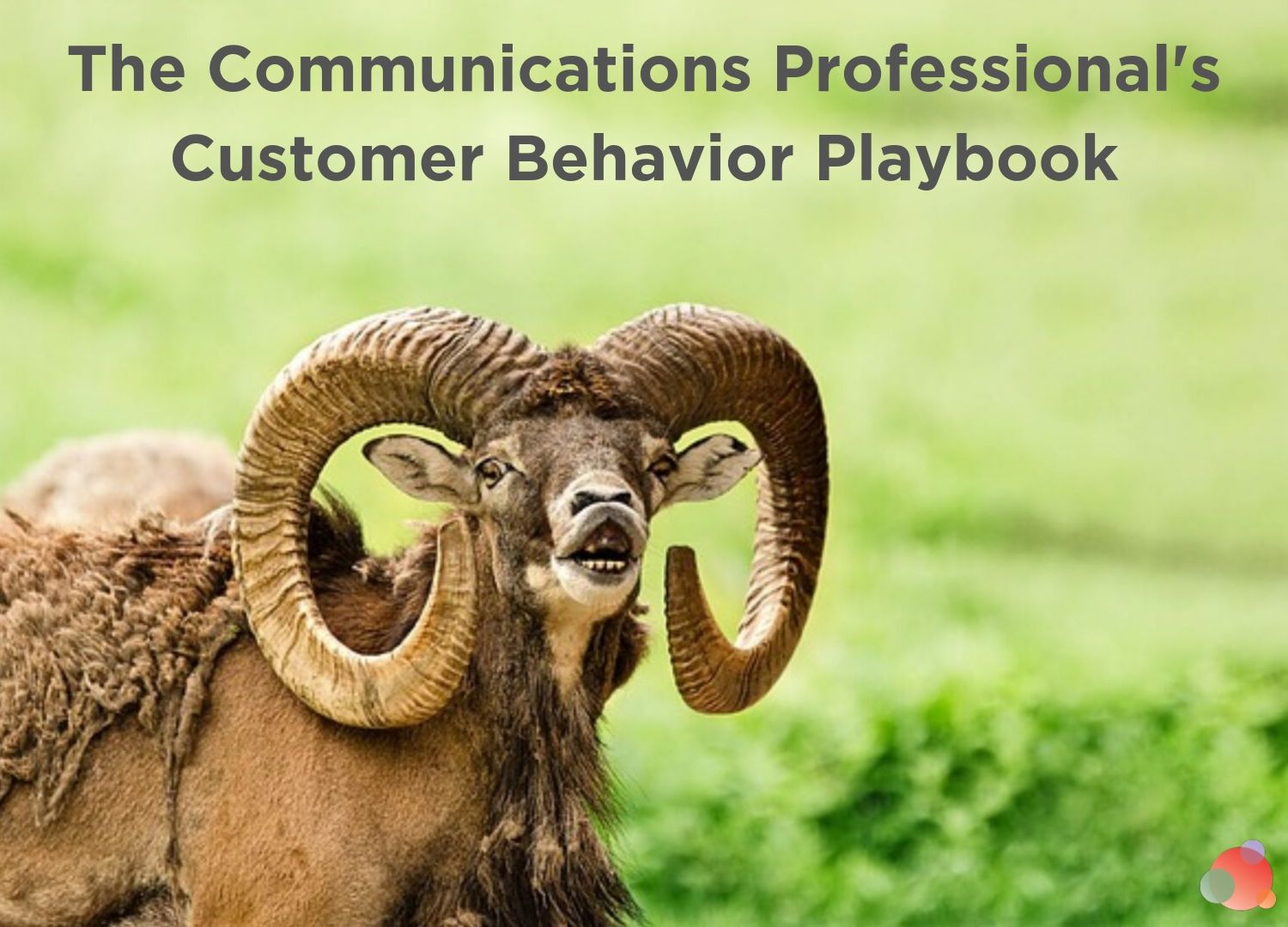 Everyone falls into the communications industry for different reasons.
Everyone falls into the communications industry for different reasons.
I did because I’m obsessed with observing and understanding people.
Customer behavior.
I can geek out on it forever.
People are fascinating to me. How they think. What they feel. How they see the world. And how all of that motivates their decisions.
There are people that are far more researched, skilled, and knowledgable on this topic than I am.
I’m a customer behavior armchair quarterback.
But it’s a pretty fun hobby and I constantly learn more about human motivation and how it affects EVERYTHING we do as communicators.
Spin Sucks Community AMA on Customer Behavior
Probably because Martin Waxman is tired of hearing me wax lyrical about customer behavior in meetings, he suggested I host this month’s #SpinSucksAMA on just this topic.
So make sure you come get geeky with me over customer behavior and motivation on Wednesday, August 14, at 2 pm ET.
The AMA will take place on Zoom and we’ll post the link in the Spin Sucks community.
I very much hope to see all of our lovely faces there and I promise not to over-analyze your behavior while attending.
In the meantime, I’ve curated several of my articles on just this topic as a primer for the discussion.
Cognitive Biases Rule the World
Cognitive biases affect the way people process information and make decisions.
In communications, these often represent the obstacles and opportunities we have to work within a consumer’s own psychological tendencies.
Pareidolia and Customer Behavior
What the heck is pareidolia?
And why do we as professional communicators care about it?
Because understanding how it works is crucial to effective brand storytelling.
Pareidolia is the perception of meaning or significance in an object (normally an image or sound) where none actually exists.
Ever seen a dog in a cloud or maybe Jesus in a Cheeto.
And that’s why pareidolia is all about storytelling. It points to our natural human tendency to tell stories in order to make the un-relatable, relatable.
In this post, I discuss brand storytelling, message framing, and how our brain uses these to motivate customer behavior.
Homophily, The Backfire Effect, and Challenging Your Customer
Challenger brands challenge their target consumers’ world view.
They ask them to question their preconceptions and behaviors and then offer a replacement.
These are often the most difficult messages to push forward because (surprise, surprise) people don’t like to have their view of the world questioned or “challenged.”
That is why we choose to consume content that reinforces our view of the world (called “homophily” which I discuss in this article).
I also discuss the phenomena of false-consensus and it’s perpetuation through social media.
And the struggle of the “backfire effect” when presenting someone with an alternative opinion.
All struggles for challenger brands and EVERY communicator.
Fear Tactics Don’t Work
Fear tactics don’t work.
We are conditioned to freeze in the face of fear.
It’s science.
While fear tactics might get people to stop and pay attention, they aren’t as effective at getting them to act.
In these two articles, I discuss why and what it means for you as a communicator?
I also discuss how to handle difficult topics without relying on fear tactics.
How to Create an Effective Message Strategy for Difficult Topics
The Halo Effect and Customer Behavior
Last week Rob and I watched a movie based on a true story about a serial killer who went for years without being suspected because he was an “upstanding citizen.”
Think about the times you hear about a horrendous crime and are shocked to find the suspect is an attractive, clean-cut, “preppy” looking person?
The reason we think this way is due to the halo effect.
The halo effect is a cognitive bias in which one quality tends to provide a “halo” over our perspective on an entire organization, person, or brand.
The halo effect in marketing is important for everything from branding, to crisis communication, to product launch and promotion, to media relations, and internal communications.
Basically, if you are a communicator of any type, in any industry, you need to understand the halo effect.
The Halo Effect In Marketing: From Brand Reputation to Product Sales
Sensory Marketing and Purchase Decision
The more of your senses you use to motivate customer behavior, the better.
Big, iconic brands use as many sensory marketing opportunities as possible.
Think about Disney.
The music.
The strategically selected smells throughout the parks and in their different hotels.
The strict guidelines on employees and characters.
In this article, we discuss the ways brands from Cinnabon to Westin successfully leverage sensory marketing, why it’s important, and how it works.
Customer Behavior and You
Customer behavior and motivation, behavioral economics, cognitive science.
None of these are impressive new-fangled technologies.
They aren’t even shiny and super flashy techniques.
This means they are often overlooked.
Even though they are the foundation of everything we do as communicators.
Join me Wednesday, August 14, at 2pm ET, as we talk brain stuff, and I share resources, tips, tools, interesting facts you can use as party tricks, and ways you can use customer behavior to power-up your communication plan and results.
We will discuss the who, what, where, why, and how of what makes people fascinating.
Their awesome, clever, complex, and sometimes downright scary brains.
You don’t have to be a neuroscientist to use brain science as part of your job.
But if you want to take part, you need to join the free Spin Sucks community.
It’s a lively group and we have some amazing and thought-provoking discussions.
(We have fun, too!)
Or you can post your questions below and I’ll be sure to cover your cognitive science and customer behavior questions on Wednesday.